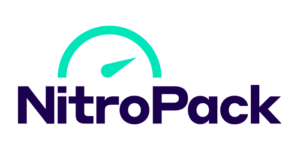The idea of deleting old low quality content might sound as counterintuitive as a chef throwing out his secret spices. Yet, this practice, known as content pruning, is a key strategy for enhancing your website’s relationship with search engines.
Google Search Console becomes less of a mystery box and more of a guide in this process, helping you identify what’s weighing your site down.
So, let’s embark on a journey through the somewhat paradoxical yet increasingly essential world of SEO, where sometimes, less really is more, especially when it comes to low-quality content. Welcome to the art of digital de-cluttering, a crucial chapter in any search engine journal.
What is Low Quality Content?

When we talk about the content of a blog post or a web page, the term low-quality content can almost sound like a gentle critique of a lackluster dish at a dinner party.
However, in the area of digital marketing and SEO, it represents a significant issue that can impact both user experience and a website’s performance in search engine results. Low-quality content is typically characterized by a few telltale signs: redundancy, outdatedness, and poor writing.
This type of content often includes thin content, which lacks substance and fails to provide value to the reader, or outdated content that has lost its relevance over time.
From the perspective of Google Analytics, low-quality content is a red flag. It can lead to decreased organic traffic as search engines prioritize delivering valuable and up-to-date information to users.
When a site is burdened with low-quality pages, its overall content quality suffers, often reflected in key metrics like bounce rates and time on page. These factors not only influence how search engines rank a site but also shape the user’s experience.
If a visitor encounters a page with a misleading page title or content that doesn’t answer their query, their trust in the site may diminish, leading them to leave and not return.
This is where the practices of content pruning and content audits become crucial. By regularly evaluating and deleting content that no longer serves its purpose, website owners can ensure their site remains relevant, authoritative, and user-friendly.
This process involves a thorough examination of all content, assessing aspects like the accuracy of information, the relevance of topics covered, and the overall engagement level of each piece.
In essence, maintaining a high standard of content quality is not just about creating new and exciting blog posts; it’s equally about curating and refining what already exists on your site.
Why Deleting Old Low Quality Content is Necessary
In digital marketing, the presence of low-quality content on a website is like a smudge on a beautiful painting; it can significantly tarnish the site’s overall authority and reputation in the eyes of search engines.
When a site is littered with low-quality pages, it’s not just the individual pages that suffer. The entire site can be perceived as less credible and authoritative.
This dilution of authority is a critical concern, particularly when it comes to Google’s complex algorithms that are designed to reward websites that offer high-quality, relevant, and informative content.
The issue of duplicate content arises, posing another significant challenge. Duplicate content, often a byproduct of low-quality content strategies, refers to substantial blocks of content within or across domains that either completely match other content or are appreciably similar.
This is problematic because search engines, which strive to provide the best search results, may struggle to determine which version of the content is more relevant to a given search query. This confusion can lead to a decrease in the visibility of all versions of the duplicated content in search results, impacting the site’s overall SEO performance.
Moreover, low-quality content can directly impact a website’s relevancy. Search engines like Google use complex algorithms, analyzed through tools such as Google Analytics and Google Search Console, to crawl and understand the content of a website.
If a site is riddled with irrelevant, outdated, or poorly written content, it becomes challenging for these algorithms to ascertain the site’s primary focus and value to users.
As a result, the site may rank lower in search results, diminishing its visibility and effectiveness in reaching its target audience.
Also, low-quality content is not just a minor inconvenience; it’s a significant barrier to a website’s success in the competitive world of digital marketing.
Each blog post, article, or web page must be crafted with quality, relevance, and uniqueness in mind to ensure the best possible standing in search engine results and to maintain the health and authority of the website as a whole.
The Benefits of Deleting Low-Quality Content

Deleting low-quality content from your website can be likened to a much-needed spring cleaning for your digital presence. This process, often part of a broader content audit, involves identifying and removing outdated content, thin content, and any other material that doesn’t meet the bar for high-quality content. The benefits of this content pruning are multifold.
Firstly, it directly leads to an improvement in the overall content quality of your site. When you eliminate weaker pages, you make room for your stronger content to shine, thereby enhancing your chances of ranking higher in search engine results.
This act of digital decluttering goes beyond just tidying up; it fundamentally alters how both users and search engines perceive your website.
By deleting content that no longer serves a purpose, you improve the distribution of link authority across your site. High-quality landing pages and key sections receive more recognition and weight, leading to a more robust and focused site structure. This refined structure significantly enhances the user experience.
Visitors are more likely to engage with and appreciate content that is relevant, up-to-date, and valuable, reducing bounce rates and increasing the likelihood of conversion.
Furthermore, a streamlined website reaps the benefits of a more efficient use of the website crawl budget. Search engines allocate a certain amount of resources to crawl each site, and by removing low-quality pages, you ensure that these resources are spent analyzing and indexing your best content.
Additionally, less clutter means faster page load times, a critical factor in both user experience and SEO. Faster-loading pages are more likely to retain visitors, reducing the chances of them bouncing off due to impatience with slow-loading content.
In essence, the process of content pruning is not just a cleanup; it’s a strategic move in the realm of digital marketing.
It refines your website’s focus, directs attention to your best content, and aligns your online presence with the evolving demands of both users and search engines.
This is a crucial step in ensuring that your site not only attracts organic traffic but also engages and converts this traffic effectively.
Content Audits: Identifying Content for Deletion

Conducting a content audit is like being an archaeologist, sifting through layers of your website’s history to uncover what should be preserved and what belongs in the archives. This meticulous process is critical in identifying outdated content that may no longer be relevant or engaging.
During a content audit, you’ll often discover old news articles or blog posts that, at one time, were timely and informative but have since become relics, offering little value to your current audience. These pieces of old content, especially those that generate little or no traffic, can be prime candidates for deletion.
The rationale behind removing such content is rooted in enhancing your website’s overall health and performance. By identifying and deleting content that is no longer useful, you make room for fresh, high-quality content, thus improving your site’s chances of ranking higher in search engine results. This isn’t just about tidying up; it’s about strategic content management.
Deleting outdated and underperforming content can lead to better distribution of link authority across your website. Essentially, you’re directing search engines and visitors towards content that truly matters, content that engages, informs, and converts.
Moreover, consider the impact on your website’s crawl budget – the resources search engines like Google allocate to scan your site. By removing pages that attract little attention, you ensure that search engines spend more time analyzing and indexing the more vital parts of your site.
This process not only helps other pages on your site attract more traffic but also optimizes your site for other search engines, ensuring a broader reach.
A content audit isn’t just about finding what to delete; it’s about reshaping and refocusing your website’s content strategy.
By routinely examining and pruning content published over the years, including old news articles and blog posts, you maintain a dynamic and relevant online presence. This ongoing process is key to keeping your website fresh, relevant, and in line with the evolving preferences of your audience and the algorithms of search engines.
How to Delete Content Effectively

This is a careful and strategic process that requires more than just hitting the ‘delete’ button. It’s about making calculated decisions to enhance your website’s performance and user experience.
To begin, conduct a thorough site audit using tools like Google Search Console. This helps in identifying old content, outdated content, and low-quality articles that no longer contribute positively to your site. Look for pages with low search volume or those that no longer align with your current content strategy.
Once you have a list of content to prune, prioritize pages for deletion. Not all content is equal; some might be salvaged with updates or redirection.
For instance, consider redirecting old but still relevant blog posts to more recent or comprehensive articles on the same topic. This approach maintains link equity and helps site visitors find the most current and valuable information.
Also, pay attention to category pages and ensure that any internal links pointing to the content you’re deleting are updated. This helps maintain a smooth navigational experience for users and preserves the site structure for search engines.
Keyword research plays a crucial role in this process as well. It ensures that you’re not removing content that still has the potential to rank for valuable keywords. After deleting content, it’s vital to monitor the SEO impact. Keep an eye on metrics like page rankings, organic traffic, and user engagement to understand the effects of your actions.
Regularly reviewing these metrics post-deletion will provide insights into the effectiveness of your content-pruning strategy and guide future content decisions.
Effective content deletion involves careful planning, execution, and post-action analysis. By methodically identifying and removing underperforming content and then closely monitoring the impact of these actions, you can significantly improve your website’s overall health and SEO performance.
How To Prevent Future Issues with Low-Quality Content

Preventing future issues with low-quality content is a proactive measure that requires continuous attention and refinement of your content strategy.
It begins with a commitment to not just delete old low-quality content but also ensure that new content meets a high standard of quality. This involves setting clear guidelines for what constitutes valuable content on your website.
Regularly update your content creation processes to include checks for relevance, accuracy, and engagement. Ensure that every new article, blog post, or page adds real value to your site visitors and is not just filler.
A key strategy is to keep an eye on outdated content. Regular content audits are crucial in this regard. They help identify content that is no longer relevant, or that could be improved.
Updating older content can often be more effective than removing it entirely, especially if it still holds some value for your audience. Additionally, refining meta descriptions and titles for clarity and relevance can improve SEO and user experience.
Internal linking is another vital aspect of maintaining content quality. Properly internally linking to relevant and high-quality content can help distribute page authority throughout your site and improve the overall site structure.
It’s essential to review and update internal links regularly to ensure they point to the most current and relevant pages and avoid linking to poor-quality or duplicate content.
Lastly, preventing low-quality content issues is an ongoing process that requires vigilance, regular audits, and updates.
By focusing on creating high-quality, relevant content and maintaining an adequate internal linking strategy, you can significantly improve the overall quality of your site and its performance in search engine results.
Case Studies: Real-World Examples

Looking into the real world, there is a fascinating glimpse into how deleting old, low quality content can dramatically improve SEO and drive business growth. These examples underscore the tangible benefits of content pruning from an SEO perspective and illustrate the transformative impact of such strategies.
Note: These examples are sites I worked on personally
One compelling case involved a major e-commerce website that faced stagnating traffic and sales. Their solution? A rigorous content audit led to the deletion of numerous outdated content and low-performing product pages.
This bold move resulted in a remarkable improvement in site performance. Not only did their organic traffic soar, but their sales figures also saw a significant upturn. This example illustrates the power of removing irrelevant content to make the more valuable pages stand out, thereby enhancing the site’s overall SEO health.
Another intriguing case study comes from a content-rich educational website. Overwhelmed with an abundance of articles, many of which were outdated or duplicated, the site underwent a massive pruning content exercise.
By deleting these low-quality pages and strengthening internal linking among the remaining high-quality content, the website experienced a substantial increase in both user engagement and search engine rankings.
This example highlights the importance of not just deleting content but also optimizing what remains through effective internal linking.
Each of these case studies presents a unique narrative, but they share a common thread: the strategic removal of outdated, irrelevant, or poor-quality content can revitalize a website’s SEO standing. These transformations demonstrate that, from an SEO perspective, less can indeed be more when it comes to maintaining and improving the quality of content on a website.
Conclusion

In conclusion, the significance of deleting old, low quality content cannot be overstated in the realm of SEO. This process, far from being just a routine cleanup, plays a crucial role in enhancing the overall health and performance of your website.
By removing content that no longer serves a valuable purpose or aligns with your current strategy, you not only improve the quality and relevance of your site but also prevent potential SEO pitfalls like broken links and redundant pages.
Moreover, effective internal linking becomes much more manageable when your site is free of clutter. This enables users and search engines to navigate your content more efficiently, focusing on the most relevant and high-quality pages.
Deleting content should not be seen as a one-time task but rather as an integral part of an ongoing content review and updating process. This continuous vigilance ensures that your website remains a dynamic and authoritative source in your niche, keeping one page ahead in the ever-evolving landscape of digital marketing and SEO.





















